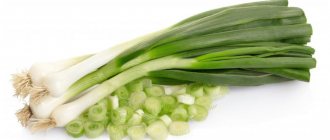Can it be left at room temperature?
Spinach needs to be kept cool to store it. The best option is a refrigerator, but if you don’t have one, you can leave the spinach for storage at room temperature, although not for more than a day. Longer storage will negatively affect the quality of greens and their taste characteristics.
One of the advantages of such storage is that the plant remains in its original form and does not have time to lose a drop of its beneficial substances. The algorithm for storing spinach indoors is simple:
- Sort out the greens.
- Rinse and dry.
- Place in a place protected from sunlight.
Preparing the leaves
A plant that is already beginning to bloom contains an increased amount of oxalic acid, which negatively affects the state of the digestive system of the person who will consume it. Therefore, only young leaves are used for harvesting.
Spinach will last longer if it is harvested in the fall.
Leaves that have a bright green color should be selected for storage. They should not have dark spots or traces of insect activity. It is best if the leaves are from the first or second harvest, without a bitter taste.
The greens need to be sorted, stalks and yellowed leaves removed. If further freezing, drying or preservation is planned, the greens are washed and dried on a spread towel.
How to keep it fresh in the refrigerator?
In a plastic container
You can store spinach in this way for a week without losing all its beneficial properties.
You need to do the following:
- Carefully sort through the leaves, remove excess debris and damaged parts, and rinse.
- Place the leaves in one layer in a food container and fill with ice water.
- Place the container on the refrigerator shelf at the lowest temperature and change the water every day.
In cling film
The method is very simple, but, nevertheless, it allows you to extend the shelf life of spinach to one month, and at the same time preserve all the beneficial properties of the plant.
- Wash and dry the leaves.
- Wrap tightly with cling film.
- Place on any shelf of the refrigerator.
In the vegetable drawer
- To identify spinach for such storage, you must first wash it and wrap it in a damp cloth.
- Place in a container.
- Leave the container in its usual place or place it on the bottom shelf of the refrigerator.
Important! It is not recommended to frequently remove bunches of greens from the refrigerator, as temperature changes will cause them to deteriorate faster. This method allows you to preserve all the beneficial substances as much as possible, but the shelf life of spinach is limited to 4-5 days.
Option for storing spinach frozen
Young spinach leaves can also be stored frozen.
They can be frozen in different ways:
- Shredded.
- With whole leaves.
- Puree.
Chopped spinach
- leaves are washed;
- stems are removed;
- leaves are cut into 1 cm strips;
- Blanch for 1 - 2 minutes in water with salt;
- plunge into ice water;
- Place in a colander to drain all the water;
- packaged in portions in bags with airtight zippers, in which air is removed, and sent to the freezer.
Freezing whole leaves
The spinach is washed and dried.
Leaves of 80 - 100 g are wrapped in cling film and sent to the freezer.
Puree
To store pureed spinach:
- the leaves are blanched;
- crushed with a blender;
- packaged in small plastic cups;
- Cover with cling film and put in the freezer.
How to preserve?
The most labor-intensive method, but at the same time allowing to preserve all the beneficial properties of the plant throughout the year. To preserve spinach you will need the following:
- Sort out the greens. Remove petioles and yellowed leaves.
- Wash the spinach and dry.
- The cooking solution is prepared from three liters of water, a tablespoon of soda and salt.
- Boil the leaves over high heat until soft.
- Strain and rinse the greens with cold water.
- Rub the resulting raw materials through a sieve, place in a small saucepan and boil until thickened.
- Place the puree into jars and close them tightly.
- Store the workpiece in a cool place.
Salting
Before salting, the leafy vegetable should be cut into strips, or simply chopped by hand. Then it is placed in layers in sterile jars and sprinkled with coarse salt at the rate of 100 g. salt per 1 kg. product.
The greens need to be compacted well, then tightly closed with a lid. Some housewives mix the greens with salt in a separate container and only then put them in jars. This preparation should be kept in a cool and dark place. You can store spinach in this form for 2 - 3 months.
Can it be dried?
If you don't have room in the refrigerator or freezer, you can dry spinach. A plant processed in this way retains all its beneficial properties, and can be stored for a year, until the next fresh harvest. So, in order to dry spinach you need:
- Wash the greens thoroughly and place them on a cloth to dry.
- Remove cuttings and spoiled leaves.
- Place spinach on a flat platter or large cutting board.
- Place the dish in the sun, covering it with gauze.
- Dried spinach should be stored in a dark, dry place.
Important! You can dry spinach greens not only in the sun, but also in the oven. The baking sheet with the prepared greens should be kept in the oven for 3-4 hours, at a temperature of no more than 45 degrees.
Further storage and terms
A delicate product like spinach is best stored in the freezer or upper compartments of the refrigerator. Closer to 0 degrees, those harmful elements that were in the greenery are destroyed, and the beneficial ones are preserved.
Dried spinach should be stored only in dry and warm conditions, without moisture or low temperatures.
In any case, all types of spinach preparations for the winter are stored for 6-8 months, no more. After this, the appearance, taste and desired properties are lost.
From frozen or dried spinach you can prepare:
- aromatic smoothie if you mix greens with fermented milk products;
- hot dishes with fish, meat, vegetables;
- main courses with cereals, pasta or potatoes;
- stuffed peppers or mushrooms.
Pickling
A method designed for long-term storage. You can preserve the taste and beneficial qualities with salting for a whole year. For this you will need:
- Sort through the greens, remove petioles and leaves unsuitable for consumption.
- Wash and dry the spinach.
- Place the raw materials in jars in layers, generously sprinkling each of them with salt. Per kilogram of greens you will need about one hundred grams of salt.
The jar with the preparation should not be immediately closed with a lid and sent to the refrigerator; you should wait until the greens settle and you can add more leaves on top.
Selection and preparation of raw materials
The beneficial and taste qualities of spinach are almost completely preserved at low temperatures. It is absolutely easy to create the necessary supply for the winter at home. To do this, you only need the greens themselves and containers in which it will be convenient to store such a product - bags or plastic containers.
For harvesting, it is more correct to use young foliage, collected before the plant begins to flower, while it is especially tender and does not taste bitter. All leaves must be carefully sorted and inspected, to exclude those that are limp, wrinkled, yellowed or damaged by pests. Then the raw materials are thoroughly washed, soaked in a large volume of water and discarded in portions in a colander. The drained leaves are laid out on paper or kitchen towels to remove excess moisture.
After soaking, the greens can be additionally rinsed under running water to ensure that any remaining sand and soil are removed.
Should I keep it near other vegetables?
Spinach has no special restrictions on storage next to other vegetables, except that according to the rules of commodity proximity, vegetables with a strong smell, such as onions, cannot be placed next to delicate spinach leaves. But if the greens are stored in a container, the problem disappears by itself.
There are other publications on our website dedicated to spinach, by reading which you will learn about its varieties and how it is grown. Our experts will also tell you what benefits and harm spinach can cause to the body, what analogues can replace it, and what are the differences between spinach and sorrel.
Freezing
To prepare for the winter, spinach is frozen. This process does not present any difficulties:
- Wash the leaves in running water.
- Throw away any yellowish or rotten leaves.
- Cut off the roots and cut the leaves into transverse strips 1-2 cm thick.
- Place the spinach in a colander and pour boiling water over it to blanch the leaves.
- Let drain and cool.
- Place in bags or containers.
- Place in the freezer. If there is a “quick freezing” mode, first turn it on, and then switch the freezer to normal operation.
Frozen spinach can be stored for about a year. It is added to cheese and cottage cheese casseroles, made into spinach pies, sauces, cutlets, and eaten with a boiled egg.
Sometimes young leaves are frozen without first blanching and cutting. But later, after defrosting, such spinach will be difficult to cut.
Advantages and disadvantages of all methods
| Way | pros | Minuses |
| Canning | The product is completely ready for use, the color is perfectly preserved. | Some of the flavor is lost during cooking. |
| Freezing | Simple and easy method | Takes up a lot of space in the freezer, the natural color is partially lost |
| Drying | Raw materials can be stored for a long time. A good way for winter storage. | A small range of dishes in which it can be used loses color. |
| Cold storage | The greens are preserved in their original form and are suitable for use in fresh salads. | Short shelf life |
| Indoor storage | Maximum preservation of beneficial properties and original appearance of the plant | Very short shelf life |
| Pickling | Long shelf life, color retained | Cannot be used for preparing sweet dishes |
If you provide spinach with proper storage, you can preserve its beneficial properties to the maximum. Eating these leaves in winter will be an excellent source of vitamins and microelements and will have a beneficial effect on the body.
How and where to properly store spinach?
Spinach does not have a long shelf life. Green leaves tend to stay fresh for several days. In order for spinach to remain juicy and not lose its taste, you need to carefully select the leaves intended for storage and create the necessary temperature conditions.
The nuances of storing spinach:
- spinach is recommended to be eaten as soon as possible; even after several days of storage, the level of beneficial elements in it decreases, and the taste becomes less intense;
- In the refrigerator, spinach can be stored in a plastic bag (pre-washing the leaves is not recommended);
- in the bag in which spinach is stored, it is necessary to make several holes;
- You can freeze spinach not only in the form of leaves, but also in the consistency of a puree (the leaves are blanched and crushed using a blender, after which they are packaged in bags or containers);
- Spinach puree can be stored in the freezer in disposable plastic cups wrapped in cling film;
- in order for spinach leaves not to lose freshness for several days, they can be filled with cold water and placed in the refrigerator in this form (such spinach should be eaten within a maximum of 3 days);
- yellowed, wilted, damaged or leaves with signs of disease or parasites cannot be stored;
- Young and green spinach leaves are ideal for storage (old spinach may become less juicy during storage);
- if you put spinach leaves under direct sunlight, they may turn yellow within a few hours (such spinach is not suitable for consumption due to the lack of juice and lethargy of the leaves);
- It is believed that the autumn spinach harvest has a longer shelf life;
- spinach should be stored next to greens, vegetables or fruits with caution (overripe fruits can speed up the process of leaf wilting, and some varieties of greens can change the aroma and even taste of spinach);
- It is also not recommended to store dishes prepared with spinach for a long time (spinach spoils quickly, so the taste of the dish will be spoiled within 2 days).
One way to store spinach is to place it in an enamel pan. If the leaves are dry and fresh enough, they can be placed in a pan and tightly closed with a lid. The container should be placed in a dark and fairly cool place. In this state, spinach can remain fresh for several days. There is no need to add liquid or additional ingredients in this case.











